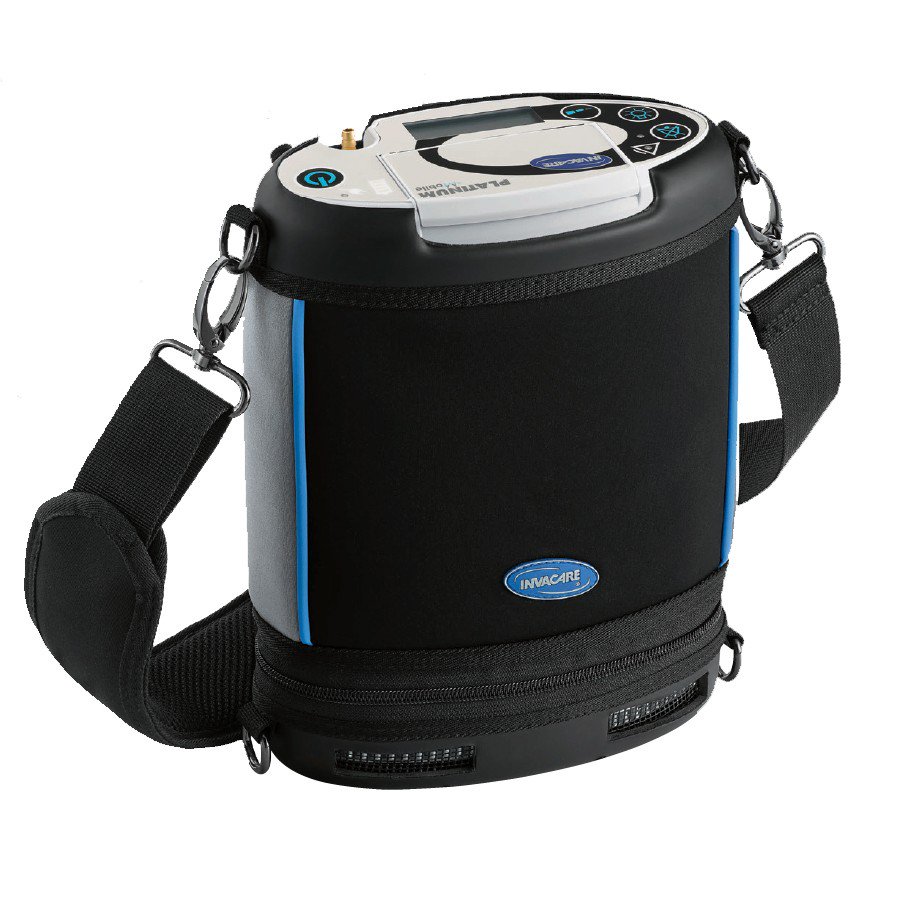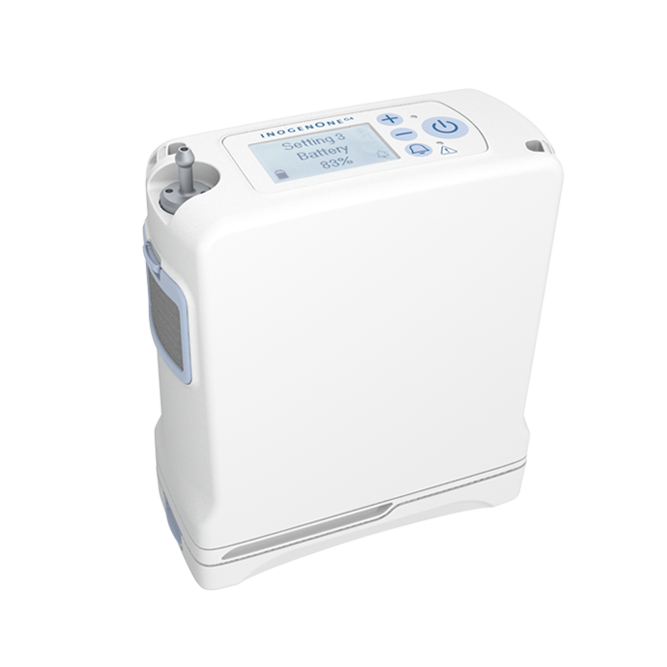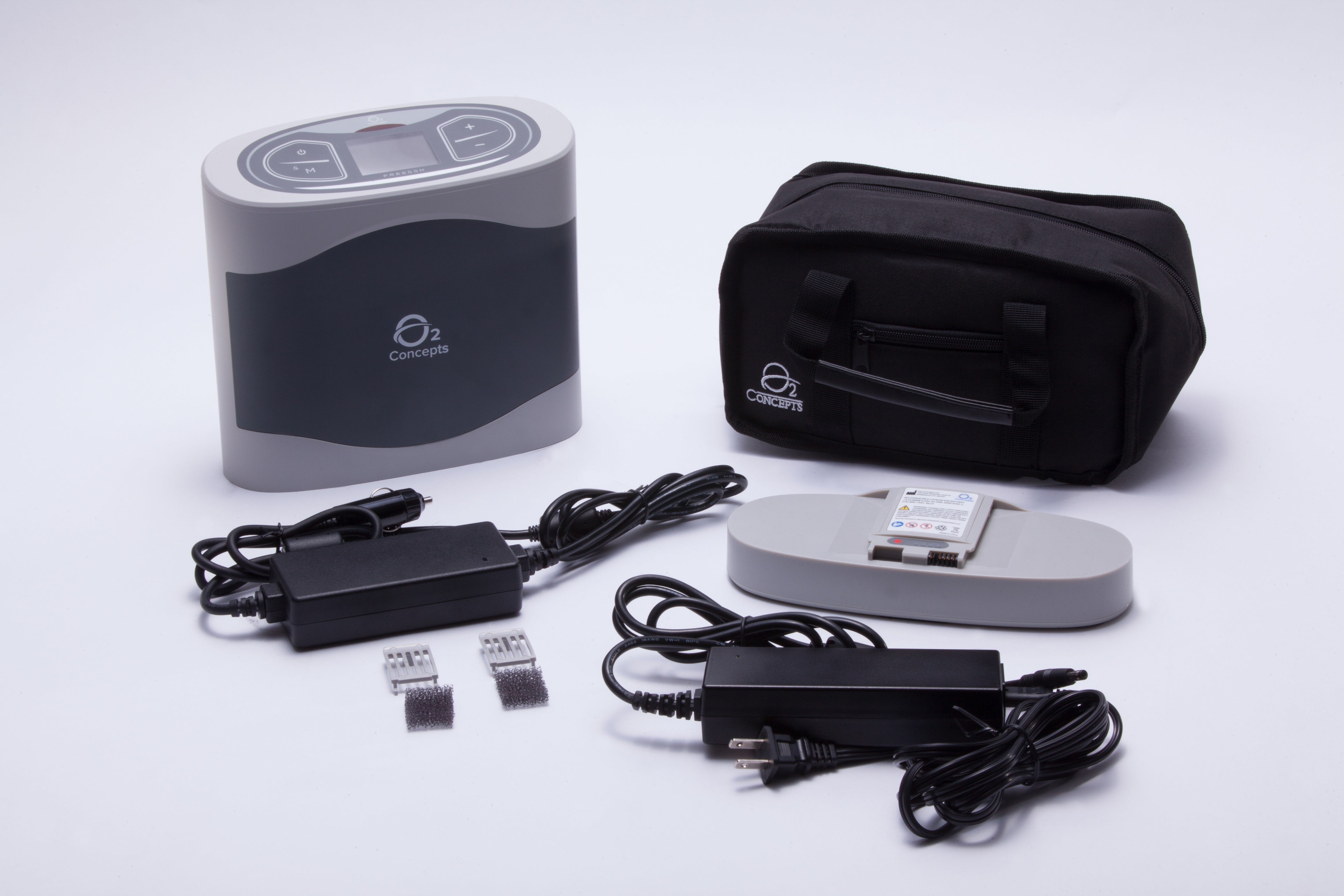Portable Oxygen Concentrators Fundamentals Explained
Wiki Article
The Best Guide To Portable Oxygen Concentrators
Table of ContentsWhat Does Portable Oxygen Concentrators Mean?Unknown Facts About Portable Oxygen ConcentratorsPortable Oxygen Concentrators Fundamentals ExplainedPortable Oxygen Concentrators Can Be Fun For Everyone
Stationary oxygen concentrators were when the requirement, but these tanks can weigh 50 extra pounds and were extremely cumbersome (Portable Oxygen Concentrators). Now, mobile oxygen concentrators get the task done, and they can suit a purse or bag! The only thing you need to remember is that mobile concentrators have extra limited oxygen delivery capabilitiesThere are two main sorts of portable oxygen concentrators: pulse dose and continuous circulation. As the name recommends, pulse dosage concentrators supply oxygen periodically, just activating when you inhale. This type of device is typically advised for COPD patients with limited oxygen needs, as the quantity of O2 that a pulse dosage concentrator can provide is fairly low.
This device can deliver up to 3,000 m, L of oxygen every minute, while pulse dosage gadgets have a tendency to top out at 1250 m, L. Constant circulation gadgets are the go-to for many COPD clients, as they're ideal for people who need two to 5 liters of oxygen a min.
Currently that you have this guide to the different kinds of mobile oxygen makers, pick the finest tool with the aid of your doctor. You can discover our blogs for more information about the kinds of portable oxygen readily available and our other products, like tubing and cannulas. Or you can call us straight with any details concerns you may have.
Getting My Portable Oxygen Concentrators To Work
We understand Americans use residential variations in home care circumstances. We wondered how well these mobile oxygen concentrators would operate in hospitals. POC concentrators enhance the percentage of oxygen in ambient air individuals inhale, whenever they need a boost. Private-use ones are tiny sufficient to carry around, and may aid avoid the requirement to visit busy centers and medical facilities.When it involves mobile oxygen treatment, there are 2 major alternatives for delivery. These are portable oxygen cylinders which consist of pressed oxygen gas, or oxygen concentrators, which make use of a battery powered system to press and filter air, in order to develop a regular supply of focused oxygen. In this message, AMS Compound Cylinders Technical Supervisor, Tony Morrin, contrasts the 2, looking at the advantages and disadvantages of each oxygen shipment system for NHS medical oxygen users in terms of patient autonomy.

Mobile Oxygen Concentrator Oxygen pureness is regularly higher when supplied from cyndrical tubes it never ever goes down listed below 99. 6%, regardless of the circulation price required. In battery-powered concentrators, purity is impacted by circulation price, and might be 90% or less, relying on the equipment. Whilst oxygen concentrators can be valuable for people that call for a reduced circulation of oxygen, cyndrical tubes give greater focus that can be more appropriate for individuals with high circulation needs.
About Portable Oxygen Concentrators
Both systems require the client to lug around tools. For cyndrical tubes, this will certainly include lugging a bag (and periodically a trolley) and for mobile oxygen concentrators this will certainly consist of the bag, trolley and power battery charger. Weight sensible, portable oxygen concentrators can be equivalent in weight, or sometimes, lighter than traditional aluminium cyndrical tube systems.
They will need to improve dramatically if they are to supply the exact same degree of performance as equivalent composite cylinders. Oxygen always lugs a safety threat. On one hand, ought to cyndrical tubes spring a leak, they can create an oxygen rich setting that could cause a boost in fire risk.

The difference is that Clicking Here there are considerable upfront prices to acquiring a mobile oxygen concentrator, but reduced running costs making use of cylinders enables the buyer to spread the cost over an extensive duration of time. One minor downside of a portable oxygen concentrator is the sound mobile systems make a considerable quantity of sound during procedure, which numerous people find disruptive.
The smart Trick of Portable Oxygen Concentrators That Nobody is Discussing

Our top notch carbon composite cyndrical tubes use high pressure (300 Bar), low weight, and NLL (Non-Limited Life) efficiency, and are certified for usage worldwide. Additional details regarding AMS Composite Cylinders Ltd can be located at .
Oxygen concentrators published here are created with user flexibility in mind. Whether it's a desktop version for home use or a smaller sized, light-weight model for on-the-go, these devices enable clients to move freely without being connected to a fixed unit. Particularly for the ones especially made for portability, patients can lug them about, assisting in travel and day-to-day tasks with simplicity.
One of the major benefits of utilizing an oxygen concentrator is the removal of the frequent requirement to re-fill oxygen tanks. This not just minimizes the logistical difficulties and recurrent prices connected with refills but likewise makes sure that the user has a much more predictable and constant source of oxygen. Oxygen concentrators are designed to fit effortlessly into the home setting.
Report this wiki page